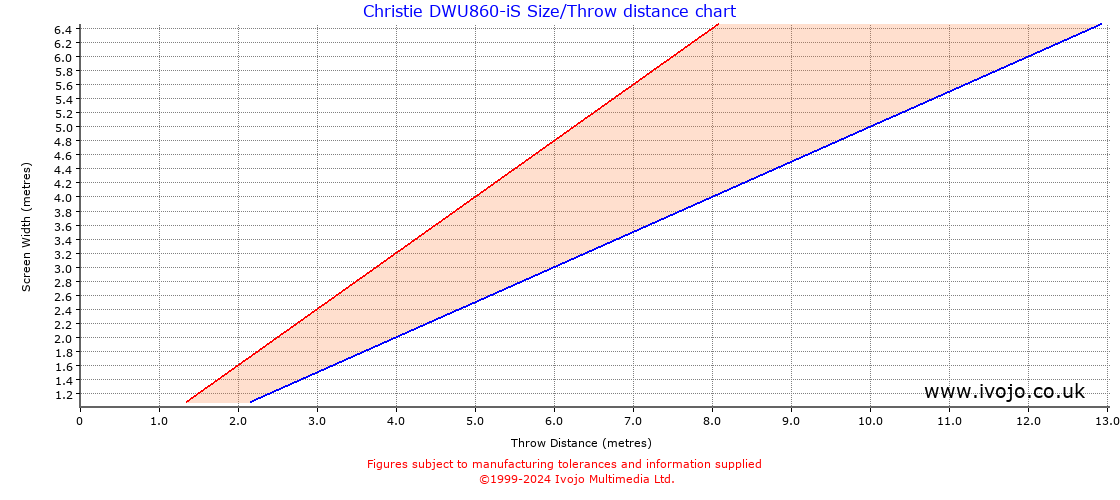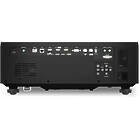Christie DWU860-iS
Christie DWU860-iS Key Features
- 7200 ANSI Lumens
- Native Widescreen
- WUXGA 1920*1200 Native Resolution
- 20000 hour lamp life (typical)
- 1300:1 Contrast Ratio
- 360° Installation
- Native Widescreen
- Lens Shift
- Horizontal & Vertical Keystone Correction
- Portrait Mode
- HDBaseT
- Picture-In-Picture
- Picture-and-Picture
- Can Be Installed Vertically
- High Dynamic Range (HDR) Ready
- Edge Blending
- DICOM Simulation Mode
- 3D Projection Ready
- Stacking Function
- Monitor Out
- 13.7kg (30.2lb.)
- P5X dust-resistant | Inspire Series’ airtight optical engine resists dust particles, ensuring long-lasting reliability, and almost zero-maintenance performance
- Built-in warping, blending, & alignment | Proprietary Christie Twist™ and Christie Mystique™ compatibility, for manual or automated camera-based warping, blending, and alignment
- Omnidirectional | Operates in any orientation for unlimited installation flexibility
- Click for Christie DWU860-iS Detailed Specifications
Availability: 3-5 days
Throw Calculator
| Lens | Minimum Throw |
Maximum Throw |
Foot Lamberts |
|---|---|---|---|
| Standard Lens | 1.35m | 2.16m | 918 |
Christie DWU860-iS Throw Chart

Along the horizontal axis is the distance in metres between the front of the projector and the projection screen. Up the vertical axis is the width of the image the projector will produce. We use width rather than diagonal as the width will remain consistent with the throw distance and zoom setting whereas the height and therefore the diagonal will vary depending on the source. For example, if you have a 4:3 aspect ratio projector and use it to watch a 16:9 aspect ratio DVD then the image will be "letterboxed", i.e. the width will remain the same but the height will be reduced.
Projector Throw From Screen Size Table (16:10 aspect ratio, in metres)
| Diag. | Width | Height | Min. Throw | Max Throw | Area | Nits |
| 0.76 | 0.64 | 0.40 | 0.81 | 1.29 | 0.26² | 8828.5 |
| 1.00 | 0.85 | 0.53 | 1.06 | 1.70 | 0.45² | 5099.3 |
| 1.50 | 1.27 | 0.79 | 1.59 | 2.54 | 1.01² | 2266.4 |
| 2.00 | 1.70 | 1.06 | 2.12 | 3.39 | 1.80² | 1274.8 |
| 2.50 | 2.12 | 1.32 | 2.65 | 4.24 | 2.81² | 815.9 |
| 3.00 | 2.54 | 1.59 | 3.18 | 5.09 | 4.04² | 566.6 |
| 3.50 | 2.97 | 1.85 | 3.71 | 5.94 | 5.51² | 416.3 |
| 4.00 | 3.39 | 2.12 | 4.24 | 6.78 | 7.19² | 318.7 |
| 4.50 | 3.82 | 2.38 | 4.77 | 7.63 | 9.10² | 251.8 |
| 5.00 | 4.24 | 2.65 | 5.30 | 8.48 | 11.24² | 204.0 |
Nits are a measure of the brightness of the final image. Multiply the figure in the Nits column by the gain of your screen to obtain a true figure.
Projector lamps dim over their life spans so make allowances by multiplying the foot nits by 0.75 to get a reasonable average.If you intend to calibrate your projector then this will also affect brightness. For home cinema use in a well darkened roon, about 42-70 Nits is ideal. For office use, aim for at least 175.
Screen Size For Given Throw Table
| Throw | Min. Width | Max. Width |
| 2.10 | 1.05 | 1.68 |
| 3.00 | 1.50 | 2.40 |
| 3.50 | 1.75 | 2.80 |
| 4.00 | 2.00 | 3.20 |
| 4.50 | 2.25 | 3.60 |
| 5.00 | 2.50 | 4.00 |
| 5.50 | 2.75 | 4.40 |
| 6.00 | 3.00 | 4.80 |
| 6.50 | 3.25 | 5.20 |
| 7.00 | 3.50 | 5.60 |
| 7.50 | 3.75 | 6.00 |
| 8.00 | 4.00 | 6.40 |

